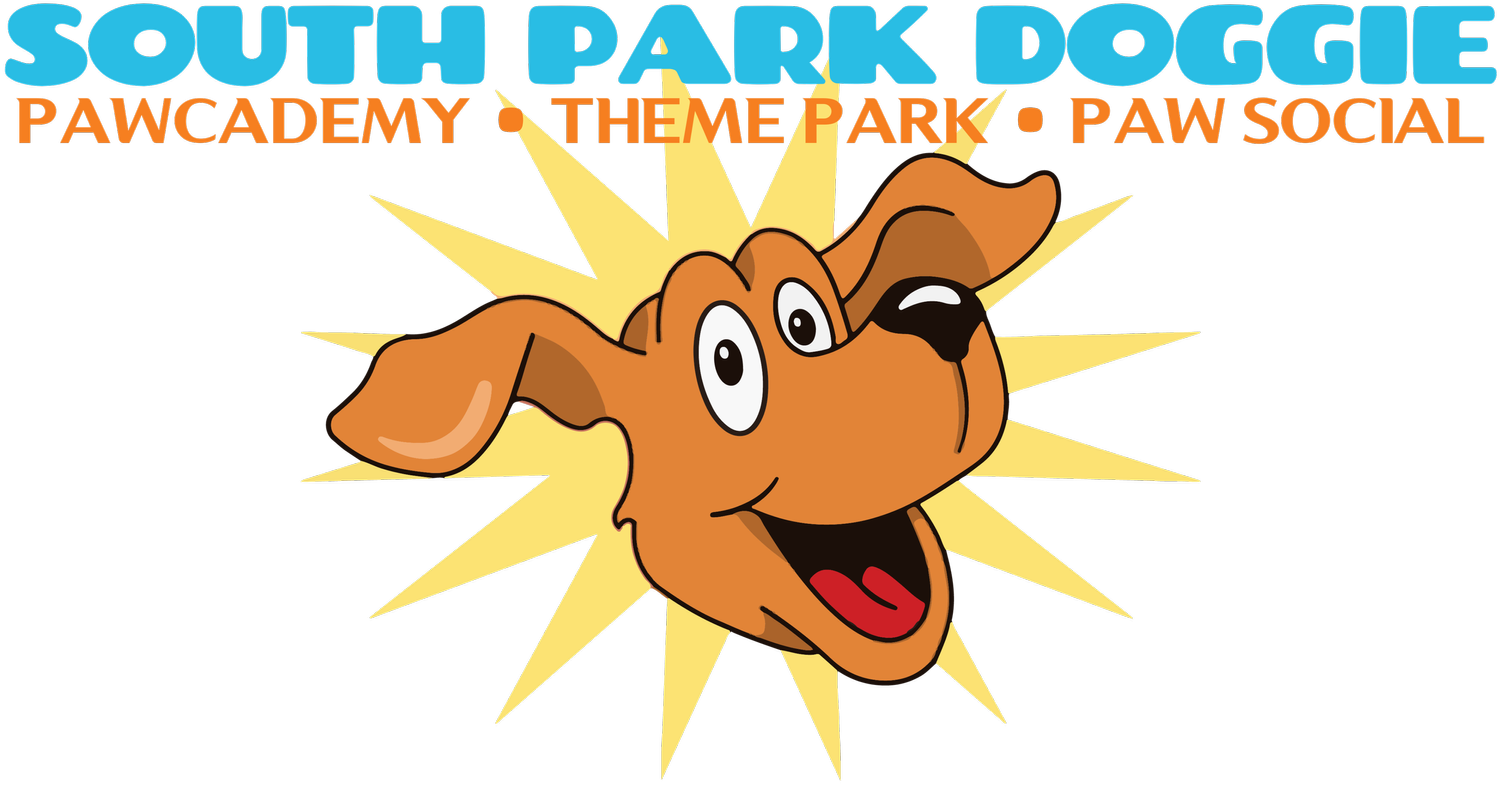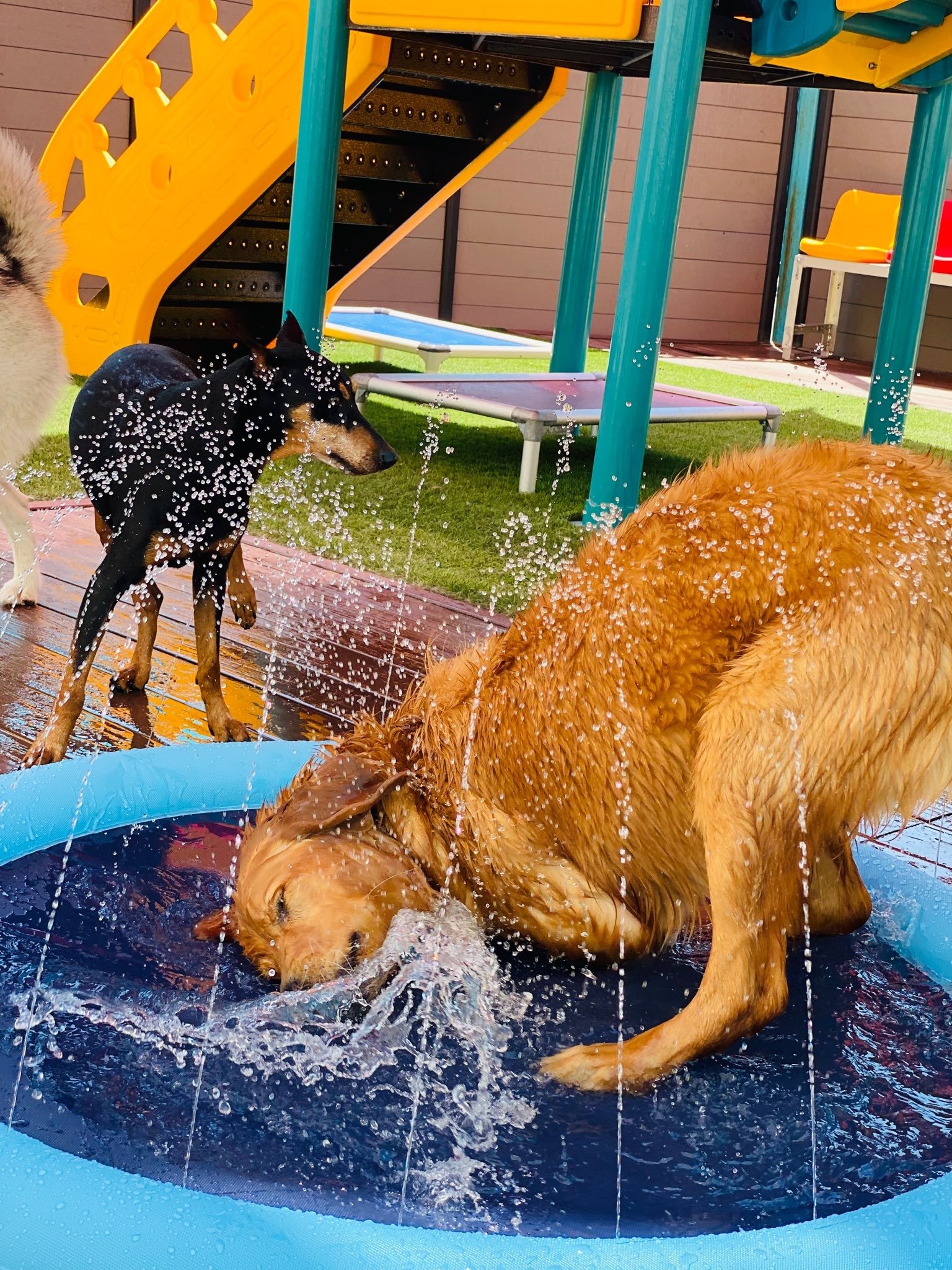Paw Blog
Written by Logan Wells
Date: 05/15/2023
Read length: 4 min
As soon as I walked through the doors of South Park Doggies Doggieland Playcare, I could feel my tail wagging with excitement. My human had been talking about bringing me here for a while, and I couldn't wait to see what all the fuss was about.
As we entered, I was greeted by friendly staff who welcomed me with ear scratches and belly rubs. They took the time to get to know me and asked my human about my likes and dislikes so they could make sure I had the best possible experience.
The play area was huge, with lots of toys, obstacles, and even a pool! I couldn't wait to dive in and start playing with the other dogs. The staff made sure that all the dogs were friendly and compatible with each other before letting us loose to play.
Throughout the day, I got to make new friends and try out new toys and activities. I even got to take a nap in a cozy bed in a quiet room when I needed a break from all the excitement.
At the end of the day, I was tired but happy. I knew I had found a new favorite place, and I couldn't wait to come back and play with my new friends again.
South Park Doggies Doggieland Playcare was everything my human promised and more. It was a safe, clean, and fun place where I could socialize, exercise, and have a great time. I'm already looking forward to my next visit!
The Role of Play in Dog Development:
A look into the science behind playtime.
Many of us think of playtime as a simple way to keep our dogs entertained, but the significance goes much deeper than that. The act of playing isn't just for fun; it's a critical component of a dog's physical, mental, and social development. In this post, we’ll explore the scientific aspects behind playtime and how it contributes to the overall well-being of your furry friend.
The Basics of Canine Play
Types of Play
Social Play: Involves interaction with other dogs or humans and can include activities like chasing, wrestling, and tug-of-war.
Object Play: Dogs engage with toys or other items, often involving chewing, shaking, or fetching.
Locomotor Play: Includes running, jumping, and other forms of movement that don’t necessarily involve social interaction or objects.
Stages of Life and Play
Puppyhood: More focused on social play to learn manners and boundaries.
Adulthood: Object play and locomotor activities become more prominent, offering ways to release pent-up energy.
Senior Years: Play may become more subdued but remains essential for mental stimulation and emotional well-being.
Physical Benefits of Play
Motor Skills and Coordination
The varied movements involved in play help in developing fine and gross motor skills, enhancing your dog’s coordination and physical agility.
Exercise and Physical Health
Playtime provides an excellent source of exercise, keeping your dog fit and healthy. It helps to maintain an ideal body weight, reducing the risk of obesity and associated health issues.
Cognitive Advantages
Problem-Solving
Certain play activities, like fetch or hide-and-seek, require dogs to use their cognitive abilities to locate objects or figure out strategies, thereby stimulating mental growth.
Focus and Attention
Engaging playtime activities demand your dog’s full attention, aiding in improving their concentration levels.
Emotional and Social Perks
Bonding
Playing strengthens the bond between a dog and its owner or other dogs, fostering social skills and emotional well-being.
Emotional Release
Play allows dogs to release pent-up emotions, serving as a healthy outlet for stress, anxiety, and excessive energy.
How Play Aligns with South Park Doggie Pawcademy’s Mission
At South Park Doggie Pawcademy, we recognize the invaluable role that play serves in a dog's overall development. Our Pawcademy curriculum includes various extracurricular activities that integrate elements of play to ensure a well-rounded experience for your canine companion. These activities perfectly align with our mission to develop every dog socially, physically, and mentally.
The science behind playtime reveals its vital role in a dog's overall development. It's not just about burning off energy or keeping your dog entertained; it's about enriching their lives in meaningful ways. As we've seen, play contributes to physical health, cognitive abilities, and emotional well-being, making it a fundamental part of a dog’s life. So the next time your dog brings you their favorite toy, remember, you're not just playing; you're contributing to their growth and happiness.
Dog Nutrition 101:
The basics of canine nutrition and how it contributes to the overall development targeted in your mission.
Feeding your dog might seem straightforward, but there's more to canine nutrition than meets the eye. The right diet not only sustains your pet but also plays a pivotal role in their physical, mental, and social development. At South Park Doggie Pawcademy, our mission is to develop every dog in these three crucial areas. This guide will walk you through the basics of canine nutrition and how it aligns with our mission.
The Building Blocks of Canine Nutrition
Proteins
Proteins are essential for muscle development and cell regeneration. They're particularly crucial for young and active dogs who require a protein-rich diet to sustain their energy levels and muscle growth.
Fats
While fats are often demonized in human diets, they're essential for dogs. Fats provide the most concentrated source of energy and are vital for cell structure and hormone production.
Carbohydrates
Carbohydrates offer a quick source of energy and are crucial for digestive health. However, they should be offered in moderation and come from high-quality sources like whole grains and vegetables.
Vitamins and Minerals
These micro-nutrients are essential for a range of bodily functions including bone health, blood clotting, and immune system function.
Physical Development
A well-balanced diet is the cornerstone of your dog's physical development. The right nutrients can significantly improve their performance in physically demanding courses like Aquatic Adventures Swim Lessons and Dynamic Dog Agility Training. A diet rich in protein and fats can provide the energy and stamina required for these activities.
Mental Stimulation
Believe it or not, diet can also have an impact on your dog's mental acuity. Omega-3 fatty acids, commonly found in fish oil, have been shown to improve cognitive function in dogs. A diet rich in these essential fatty acids can enhance your dog's performance in mentally stimulating courses like Canine Cognitive Challenge Puzzle Training.
Social Benefits
Nutrition can also affect your dog’s behavior and, in turn, their social interactions. Nutrient imbalances can lead to a variety of behavioral issues, including aggression and extreme timidity, which can hinder social development. A balanced diet can thus support the social skills your dog learns in classes like Canine Communications Language Arts.
The Importance of Hydration
Just as it is with humans, hydration is crucial for dogs. Adequate water intake is essential for virtually every biological process, including digestion, circulation, and waste removal.
Nutrition is a critical, yet often overlooked, aspect of canine development. A well-rounded diet supports the physical, mental, and social growth that is so central to the mission of South Park Doggie Pawcademy. As you embark on this journey of comprehensive development for your furry friend, remember that the food they eat is as important as the training they receive.

